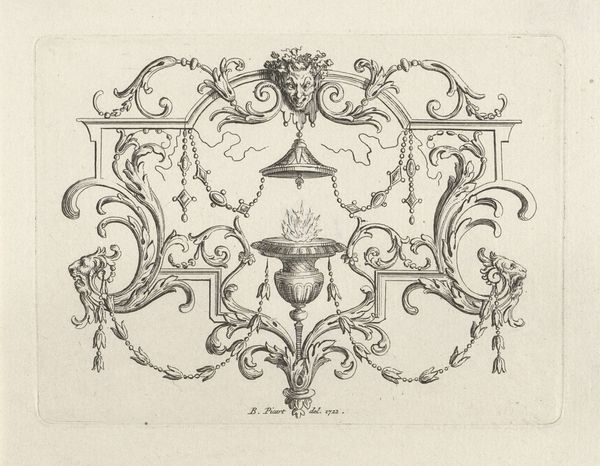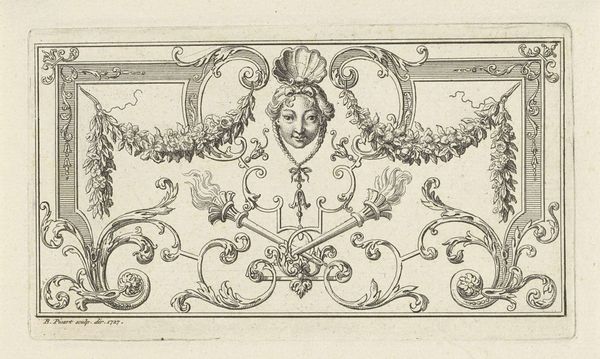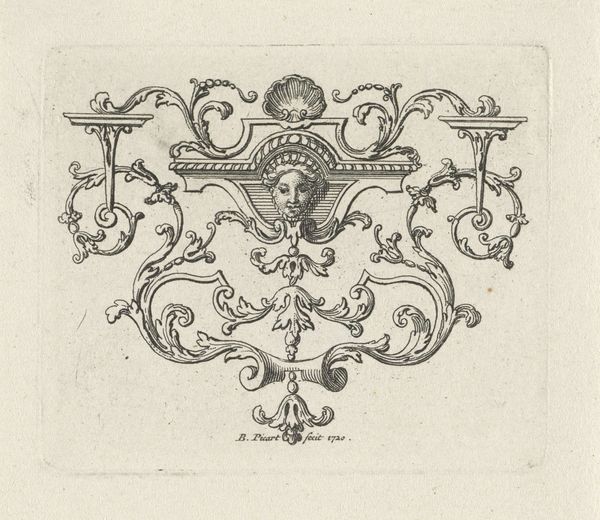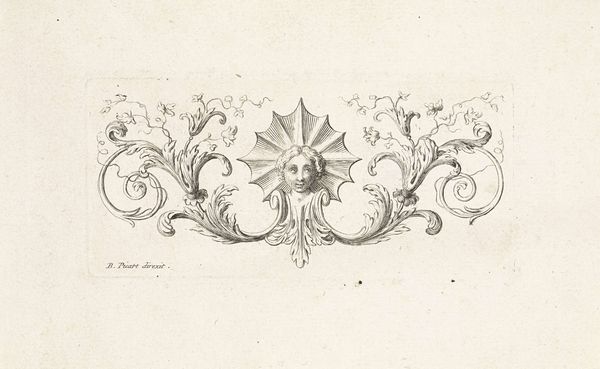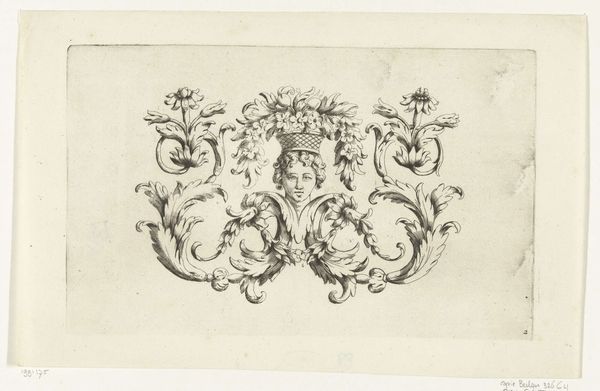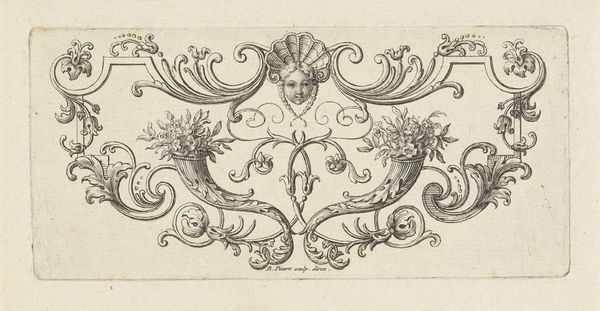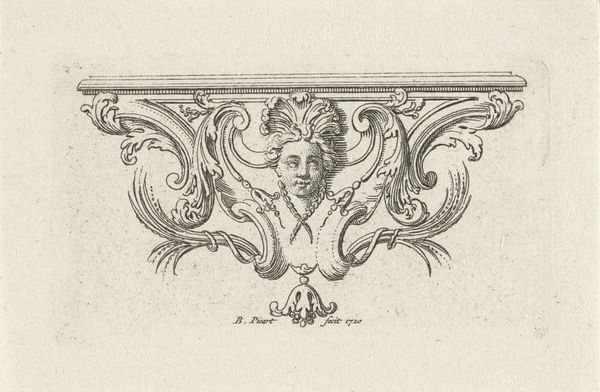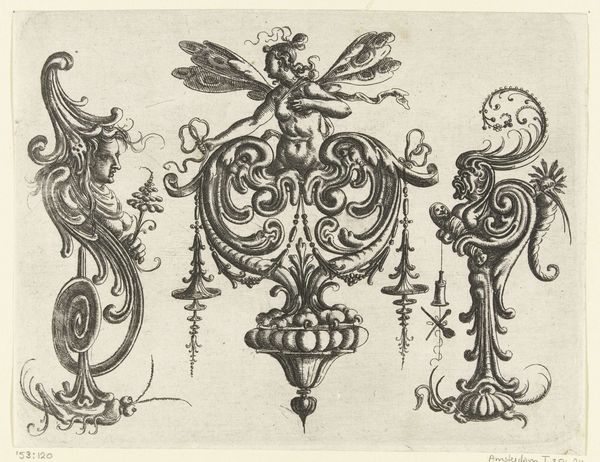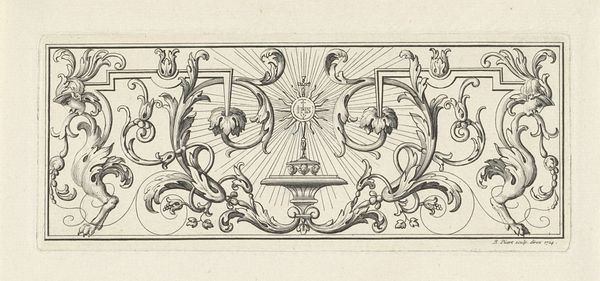
drawing, ornament, ink, engraving
#
drawing
#
ornament
#
baroque
#
old engraving style
#
figuration
#
ink
#
engraving
Dimensions: height 49 mm, width 71 mm
Copyright: Rijks Museum: Open Domain
Curator: The visual vocabulary here is immediately striking. The symmetry, the detailed embellishments—there’s a sense of exuberance almost contained within the precision of the line work. Editor: It feels contained, almost repressed, actually. Baroque can often have that gilded cage vibe, can't it? It’s so tightly wound, the details threaten to suffocate the very image they're supposed to embellish. Curator: Perhaps. We are looking at an engraving entitled "Ornament met gezicht en lier," or "Ornament with Face and Lyre," crafted around 1720 by Bernard Picart. It's held in the Rijksmuseum. Picart was a prolific engraver, often working in the Baroque style, as we see exemplified here. Editor: What really strikes me is the contrast between the delicate, almost saccharine imagery – that cherubic face, for instance – and the potential power dynamic embedded in such ornamental display. Who was this intended to impress, and what societal structures allowed for such elaborate displays of wealth and taste? Curator: Baroque art, particularly ornamentation, spoke to power. Think of Louis XIV’s France. It was a demonstration of divine right and the king’s absolute authority reflected even in the smallest decorative details. But also, it wasn’t solely about power. The lyre is evocative of music and the arts, of course, but can also serve as a direct visual reference to the Greek God Apollo. Editor: And the faces...the upper face with wings feels angelic, but below, we find something much more faun-like. Almost demonic, especially placed at the very base as if this structure rises upon its subjugation. This duality, where the sacred masks the profane, that's Baroque at its finest, and its most duplicitous. Curator: Precisely. The juxtaposition is vital. Baroque is nothing if not a play on contrasts. In Picart’s engraving, the seemingly opposing motifs converge, enriching each other to achieve an ornate design that still speaks powerfully centuries later. Editor: And maybe its resonance today lies in unveiling those embedded contradictions. Recognizing that beneath the veneer of beauty lies a complex web of social, political, and even spiritual tensions is key for deconstructing the continuing legacy of such works.
Comments
No comments
Be the first to comment and join the conversation on the ultimate creative platform.

